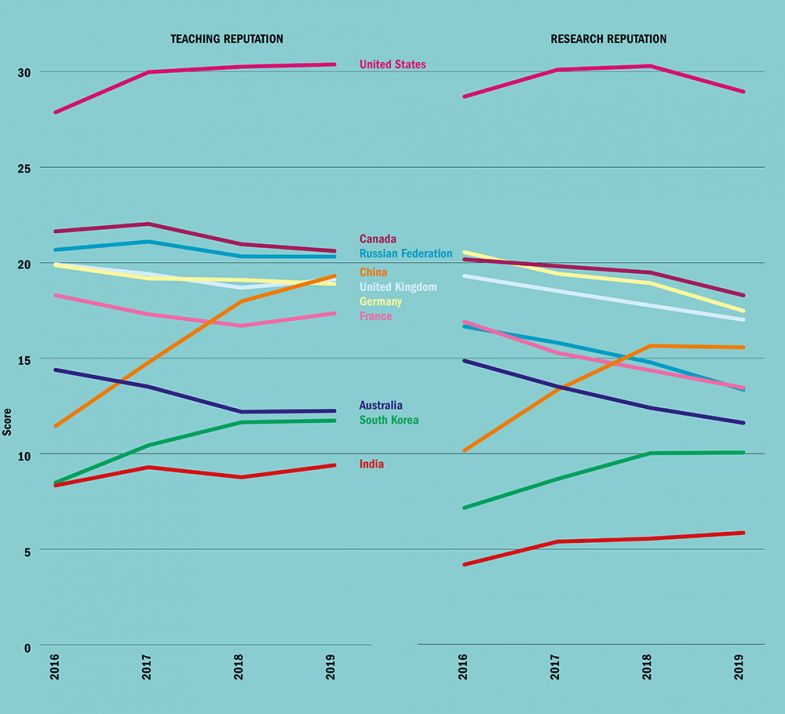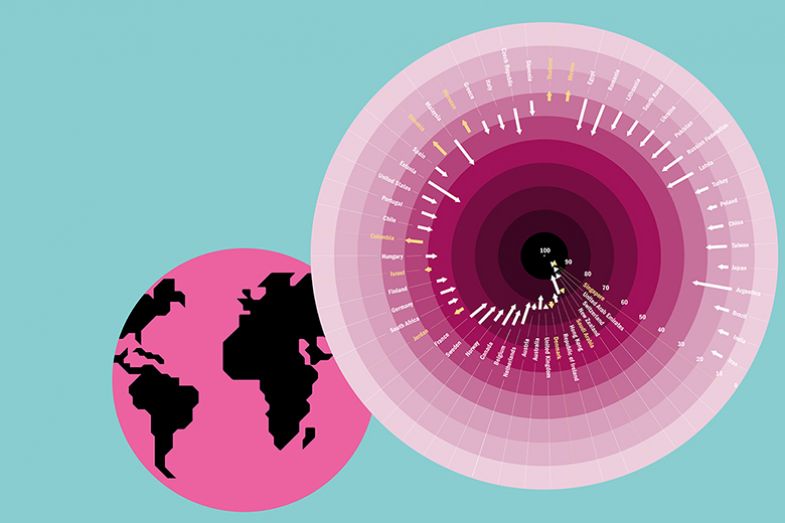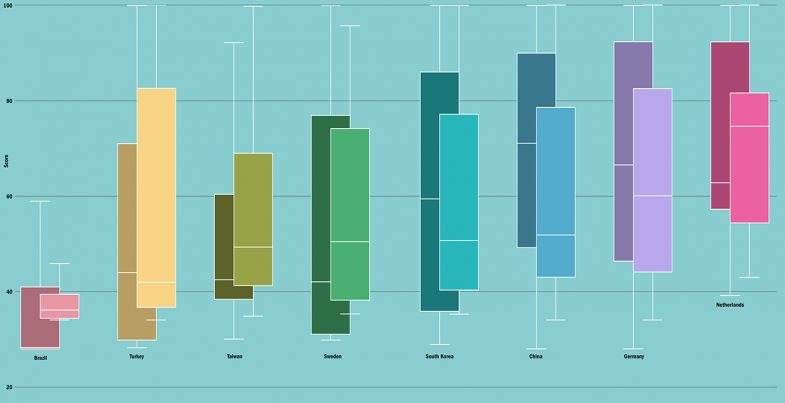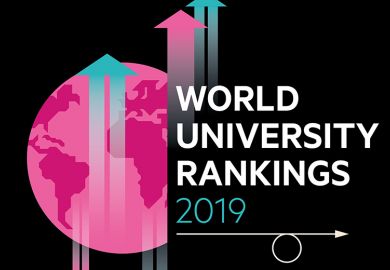Browse the full results of the World University Rankings 2019
Looking outward: the international pillar
Most countries in the World University Rankings are improving on this measure
This chart shows that most countries in the Times Higher Education World University Rankings are improving their average scores in the “international outlook” pillar, which is determined by data on the level of international staff, students and cross-border research at each institution.
Each arrow represents the change in average score (shown by the distance of the arrows) for international outlook from 2016 to 2019 for countries with at least two universities in the ranking.
Small countries that are important global hubs – such as Singapore, Switzerland and the United Arab Emirates – naturally have the best scores, with Hong Kong taking a noticeable leap forward in recent years.
Download a copy of the World University Rankings 2019 digital supplement
Other countries to see their scores move up a significant amount include the Netherlands – where courses in English have attracted many international students – and Canada, which has been making inroads in staff and student recruitment against competitor countries.
France and Germany have both also made strides on internationalisation but the UK seems to have stalled, despite still being a highscoring nation for global outlook.
Elsewhere, some other regions around the globe have seen their universities’ scores increase at a rapid rate including Malaysia, Russia and Taiwan. In particular, Taiwan’s score is now ahead of Japan, which has struggled to internationalise its higher education system.
Two major emerging nations, India and Brazil, also have among the lowest international outlook scores and may need to focus on this aspect to truly develop their universities on the world stage in the coming years.
Changing patterns in industry income
Increased collaboration has led to improved scores on this measure
Some countries around the world such as Germany and China have managed to establish strong reputations for getting industry and universities to work closely together.
However, this chart – based on how scores in the World University Rankings’ industry income pillar have been shifting over time – suggests that perhaps performance on this indicator is becoming less varied by country.
The countries represented are those where the median industry income score moved the most between the 2016 and 2019 editions of the rankings. Boxes on the left-hand side show the distribution of 2016 industry scores in each country (with the median shown by the middle line), and the right-hand boxes give the 2019 scores.
What is immediately apparent is that some countries that have traditionally performed strongly for industry income appear to have slipped back in recent years.
China, despite its strengthening position in the rankings overall, and Germany have seen the bulk of their institutions (shown by the boxes, which represent the middle half of universities in each distribution) fall back, with the median score in China sliding by about 20 points. There has been a similar decline in South Korea, too.
The effect of new institutions entering the ranking (with lower scores) may be one reason for these changes, especially in the case of China, but another factor could well be other nations making ground.
In Taiwan, there has been a noticeable uplift in the distribution of scores, while Sweden too saw its median university score rise and the bulk of its institutions perform better for industry income in 2019.
The chart also suggests that the lowest-scoring universities for industry income in each country are improving, shown by the lower outlying “whiskers” of each box shifting up in 2019.
Approval ratings
China has improved markedly in both teaching and research reputation
The rapidly improving reputation of China’s top universities as the stock of Western institutions stalls, or even falls, is clearly visible in the two accompanying graphs.
Each chart shows the average teaching and reputation scores for the top 10 universities in some major higher education nations around the world and how these have changed from the 2016 to 2019 rankings.
Together, reputation scores for teaching and research make up a third of the final score for universities in the World University Rankings, so changes over time can help to explain why some countries’ institutions are gaining places.
On teaching reputation, the US’ top institutions have maintained their huge lead over universities from other countries, while other nations – such as Germany, the UK, Australia and Canada – have slightly fallen back on average. China, meanwhile, has leaped ahead, with its highest-ranked universities now commanding a global reputation on a par with everyone bar the US.
Another country to noticeably improve its teaching reputation among the top-ranked universities is South Korea, although the country still trails other nations slightly.
On research reputation, there is an even more marked stagnation among the top 10 universities in Western nations. The average for Canada, Germany, the UK, France and Australia has drifted back by a few points, while the US has also stalled on this measure.
Although its research reputation score has not noticeably changed in 2019, China’s rapid rise over time is again clear. Its top 10 universities now have an average research reputation score that is higher than the best-performing institutions in both France and Australia.
Meanwhile, as it has done on teaching reputation, South Korea has also been making reputational waves in research over the past few years, while India’s top institutions too are improving their standing.

Editor’s note: November 2018
The international outlook score for some universities in Hong Kong has changed following a correction to the table on 22 November 2018. For the most up-to-date 2019 World University Rankings results, always use the overall league table. Click here for more information.
Register to continue
Why register?
- Registration is free and only takes a moment
- Once registered, you can read 3 articles a month
- Sign up for our newsletter
Subscribe
Or subscribe for unlimited access to:
- Unlimited access to news, views, insights & reviews
- Digital editions
- Digital access to THE’s university and college rankings analysis
Already registered or a current subscriber? Login









